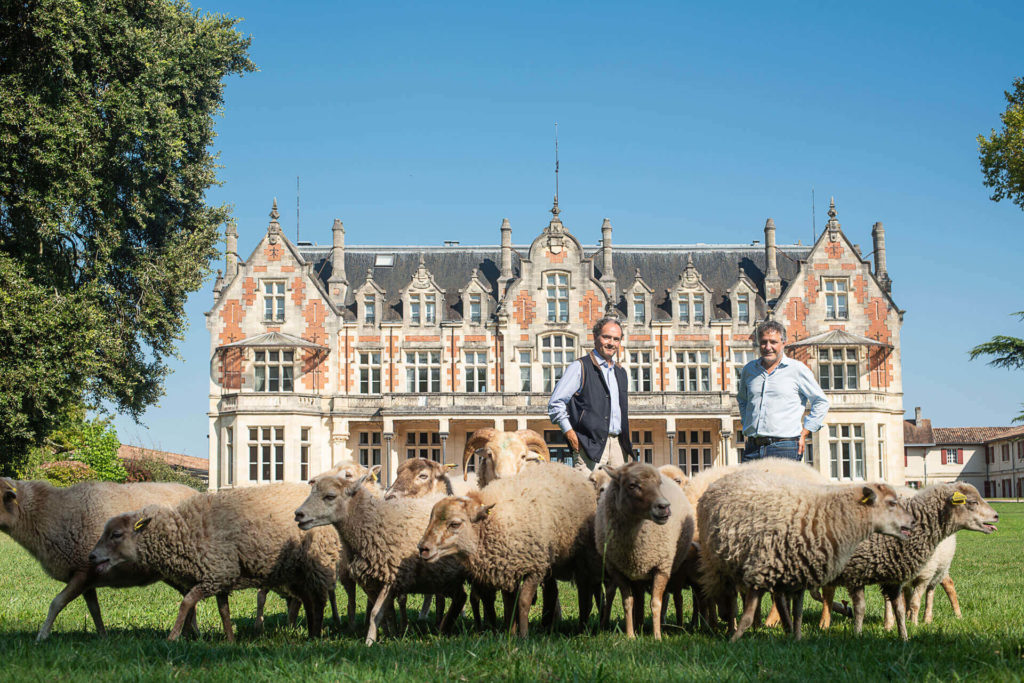Château Cantenac Brown unveils a project to create the only ecologically responsible winery of its kind
Posted 25/07/2022
Source - Vertdevin
Tristan Le Lous, who has owned Château Cantenac Brown (an 1855 Third Growth estate in the heart of the Margaux appellation) with his family since December 2019, unveils an ambitious plan for the future: a unique winery designed by architect Philippe Madec, which will push back the boundaries of current standards for ecological and environmental responsibility.
A unique raw earth winery project
When 40-year-old agronomist Tristan le Lous and his family acquired Château Cantenac Brown in December 2019, he undertook to perpetuate and develop the existing qualitative and environmental approach, so that this magnificent terroir could continue to offer its best with wines that are «in touch with the land». Tristan Le Lous and winemaker José Sanfins entrusted Philippe Madec, an ecologically-committed architect, lead partner and pioneer of environmental responsibility, with the task of designing an entirely eco-friendly winery with ground-breaking architecture. Built exclusively from raw earth and solid wood from Aquitaine, at the cutting edge of innovation in terms of making and storing wine, this gravity-fed winery represents a technical feat that is unique in terms of respect for the environment.
Credits : Château Cantenac Brown
“We are aware of nature’s generosity and its importance for our terroir. Château Cantenac Brown stands at the heart of parkland that has conserved its remarkable biodiversity for more than two hundred years. It is our duty to respect that legacy. Our entire approach is uncompromisingly based on an ecologically responsible philosophy”, emphasises Tristan Le Lous.
A zero-carbon footprint winery
In order for the new winery to blend into its ecosystem, it will be fully integrated within the current buildings, with the triple objective of making use of existing infrastructures and preserving unspoilt landscapes and unadulterated soil. All the materials, which are bio-based, natural and untreated, will be sourced from the Aquitaine region with the objective of achieving a zero-carbon footprint. There will be no use of cement.
The cellar walls will be built using the rammed earth technique, an age-old construction method that offersexceptional ecological performance. The raw earth, consisting of clay and sand, will be compressed directly at the château to build the walls of this unique construction. Also built with raw earth, the low vaulted roof of the winery will represent an architectural feat in its own right: it will be the only one in Europe on this scale, and the only one in the world supporting a wooden framework. Until now, only two vaulted earth roofs on this scale have ever been built: in Ctesiphon, for a Persian king in the third century AD and in India, in the experimental town of Auroville. The vault at Château Cantenac Brown will be the only one in the world to be load-bearing.
The power of the earth
The thermal inertia of the winery, induced by the use of raw earth for its construction, will provide a perfect atmosphere for the stability and ageing of the wines, without air conditioning and therefore without energyconsumption. The architectural project is above all a model of ecologically responsible construction adapted to climate change over the coming decades. At the cutting edge of technology, the winery will also be entirely gravity fed, allowing the grapes to be handled gently with full control of the process. “The vat room will also be made up of a large number of small vats, allowing for high-precision blending”, says José Sanfins.
This well-thought out project is a tribute to the land and to Cantenac Brown’s connection to nature. “My family wishes to build on what already exists, with what nature offers to this terroir”, explains Tristan Le Lous. “What I liked about Philippe Madec’s approach was the idea of happy frugality, a sort of quest for perfection.”
Ultimately, the project will lead visitors on a circuit as close as possible to nature, allowing them to understand the whole process from the vine to wine, using all their senses. Completion of the winery is scheduled for the 2023 harvest. It will mark the dawn of a new era, ever more respectful of the environment, an ambition dedicated to both nature and wine.

